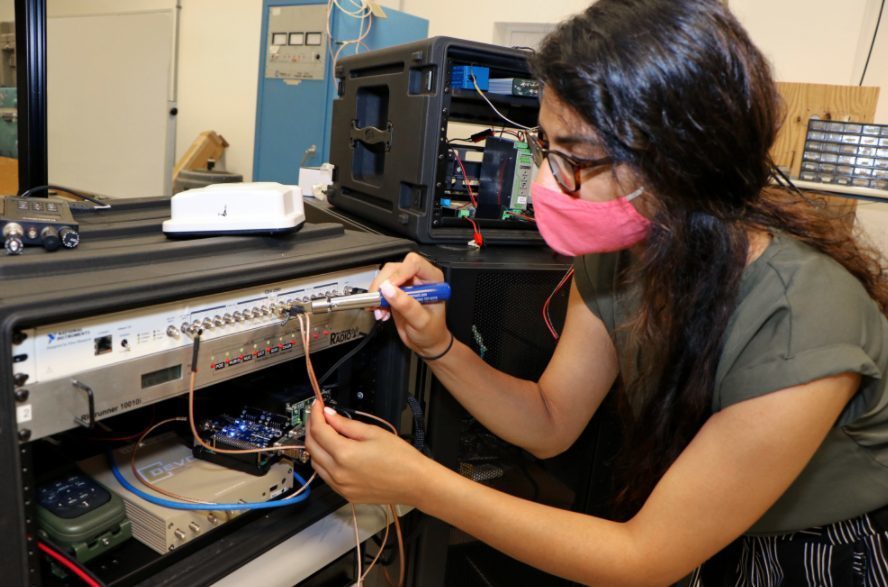How External Factors Can Impact Systems Engineering and Technical Assistance

by Mallory Arnold
Taking a holistic approach at examining the various external factors that affect Systems Engineering and Technical Assistance (SETA) can augment a company’s success. One of the ways you can analyze the market is using a PESTLE Analysis, a strategic planning tool that examines external political, economic, social, technological, legal and environmental factors that may contribute to the success or failure of a business. It is often used when performing a market analysis for expansion into a new or adjacent market or domain.
A PESTLE analysis is not typically applied to a service, offering or product. However, looking at SETA contracting as a market or domain allows Amentum to better understand the key issues or potential external risks that impact these types of contracts. In a way, a PESTLE analysis of our SETA offering is a function of risk management because it identifies external factors that impact those we serve; our customers and our SETA workforce. Thus, we are able create resiliency in our resources and processes for successful execution. Let’s break it down:
Political: The political climate, regardless of political affiliation, disrupts DoD operations, changes posture plans, drives policy, and affects funding. When budgets and funding are not approved, Congress must enact a Continuing Resolution (CR) to fund continuing operations. The passage of a CR usually indicates there was a political standoff. According to the Congressional Research Service in its August 2019 report, “DoD has started the Fiscal Year (FY) under a CR for 13 of the past 18 years (FY2002-FY2019) and every year since FY2010.” Program officers and acquisition corps program managers cannot start new acquisitions or start new programs under a CR. Political factors such as these impact the SETA workforce greatly, especially SETA contracts that support defense weapon systems and new start programs and technologies.
Economic: The economy has a major impact on SETA contracting. Economic factors in a PESTLE analysis include items such as economic growth, disposable income, and labor costs. The economy drives the DoD budget as lawmakers continue to look for ways to reduce the national debt. The pendulum seems to swing between the belief that there are too many contractors supporting DoD to not enough. There have also been initiatives focused on strengthening and “right-sizing” the DoD’s workforce. Whether the pendulum swings one way or another, the economy constantly changes the cost of service. Analysis of economic factors should be done often because it impacts whether the SETA workforce should surge or drawdown. Since DoD budget increases are not sustainable, contractors must be prepared to help customers justify programs and find cost savings.
Social: When analyzing social factors, we look at age profile, generational shift, education level, social mobility and employment patterns. It becomes clear that social PESTLE factors are determined by the people — and SETA contracts are about people. Ensuring a qualified SETA workforce boils down to attracting and acquiring talent through best practices in recruiting, hiring, training and retaining.
Age Profile and Generational Shift: According to a 2017 study by the MITRE Corporation, “Understanding Defense Acquisition Workforce Challenges,” the number of experienced acquisition professionals in DoD is declining and are being replaced by a younger generation facing a steep learning curve. Their study also showed that more than 50 percent of the DoD’s acquisition workforce would be eligible for retirement within the next 10 years. A retiring workforce coupled with lateral career moves outpacing new hires has left major DoD weapons programs with a dwindling acquisition workforce and an increasing need for SETA support contractors. To ensure that the SETA workforce can adapt to these factors, contractors must remain flexible to customer’s staffing needs. We cross train our SETA staff and ensure vertical/horizontal information sharing to alleviate knowledge transfer challenges as employee cohorts either enter the workforce or enter retirement.
Education and Security: Often times, attracting the right talent to support government contracts is especially challenging due to contract required education minimums and the necessity of security clearances.
Social Mobility: Location of the customer and workforce is also a factor. Aberdeen Proving Ground (APG) is an example of social mobility factors at play. Centered in the heart of the Mid-Atlantic, APG competes with the Baltimore, Washington D.C., Wilmington, Del. and Philadelphia metropolitan areas to attract and retain talent. Our workforce has many options in terms of where they want to live and work.
Technological: Technological factors that affect the SETA workforce are highly dependent on the type of SETA workforce employed. Some customers use SETA contracts in the traditional sense to support the acquisition process, such as the DoD 5000.02 or Other Transaction Authorities. Some research organizations use SETA contractors in a more technical capacity providing technical analysis and engineering. Other customers use a more expansive definition of SETA contractors. For example, according to DARPA’s guidance on Contractor Relationships, Inherently Governmental Functions and OCI’s: “The term SETA contractor used at DARPA is more expansive than the DFARs definition. DARPA SETA contractors provide support to a program as technical, management, financial and or administrative specialists.”
Regardless of the type of SETA expertise, these workforces have continued to expand over the past decade in response to advancing technological developments. As DoD systems become increasingly complex, leveraging machine learning, artificial intelligence and automation, there is an increased need for experts who understand how to procure and evaluate new technologies.
Technology competence is another factor. Businesses are adopting new technologies and tools to streamline and automate processes and workflows. A SETA workforce must practice continual learning and open-mindedness to adopting new tools of the trade. This has become increasingly important as businesses have shifted to a digital work environment as a result of the COVID-19 pandemic.
Legal: SETA contracting is governed by a legal document known as the Federal Acquisition Regulations (FAR). According the FAR 37.203 “The acquisition of advisory and assistance services is a legitimate way to improve government services and operations. Accordingly, advisory and assistance services may be used at all organizational levels to help managers achieve maximum effectiveness or economy in their operations.” One of the main legal factors affecting SETA contracts is Organizational Conflict of Interest (OCI). An OCI happens if a systems developer is also providing SETA advisory services for the same customer. OCI legislation is designed to create contracting structures that are fair and seek to protect the competitive process by preventing unfair advantages and impaired objectivity.
Environmental: COVID-19 has been a forcing function in the way DoD and SETA contracts operate. At this stage in the pandemic, businesses and the government alike have witnessed several pros and cons to teleworking. While some positions are necessarily in-person positions, others are not. The recent experience with remote work could provide the empirical data needed to identify positions that can operate remotely without compromise to the mission. For example, the CARES Act allows the terms and conditions of contracts to be modified to allow contractors to adjust work locations for employees who are unable to work on federally approved worksites.
In summary, applying market analysis tools to a service, offering or product is a viable method to understand macroeconomies that drive our SETA workforce and our customers. It can serve as a risk management and planning tool, adding resiliency to our offering. At Amentum, we continuously conduct these types of analyses to help us quickly pivot and easily tackle issues that are beyond our control. As a result, during COVID our SETA workforce was able to stay mission focused and continue delivering excellence.

